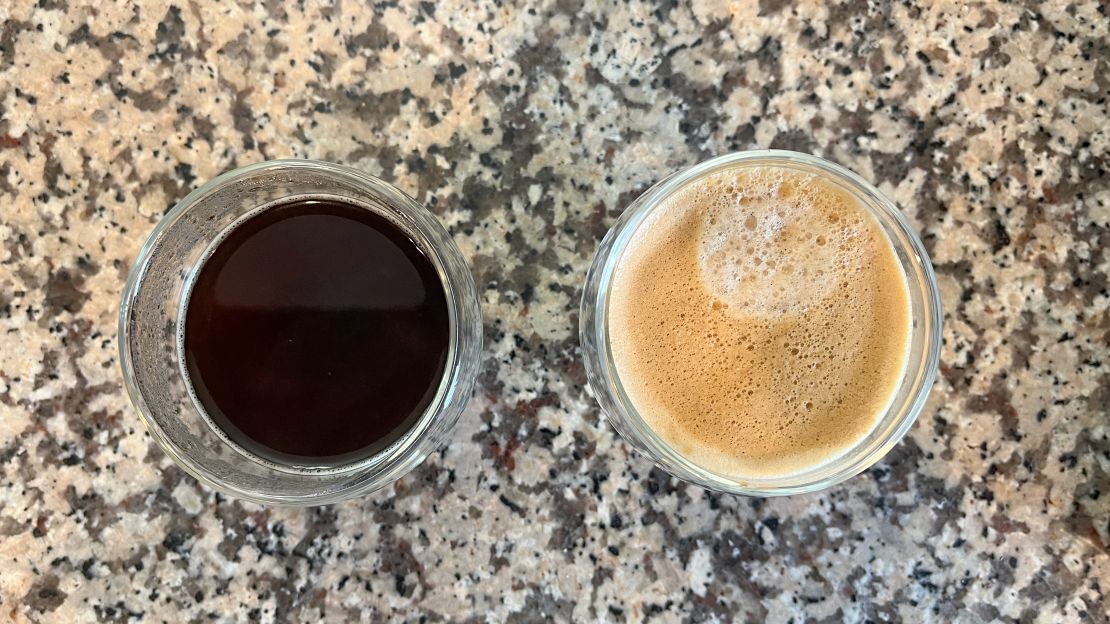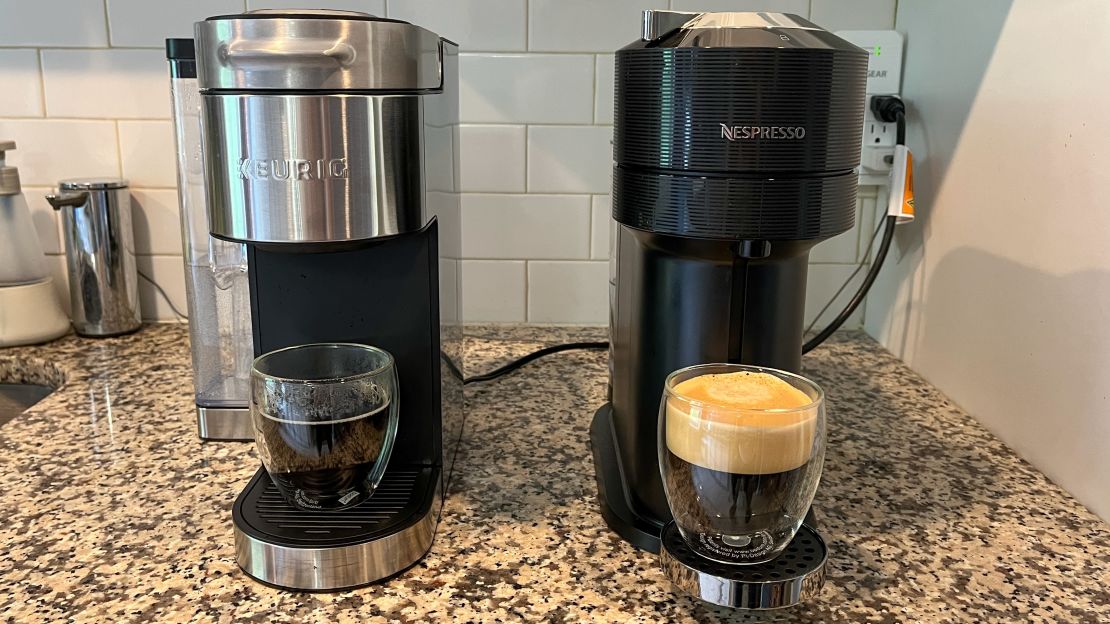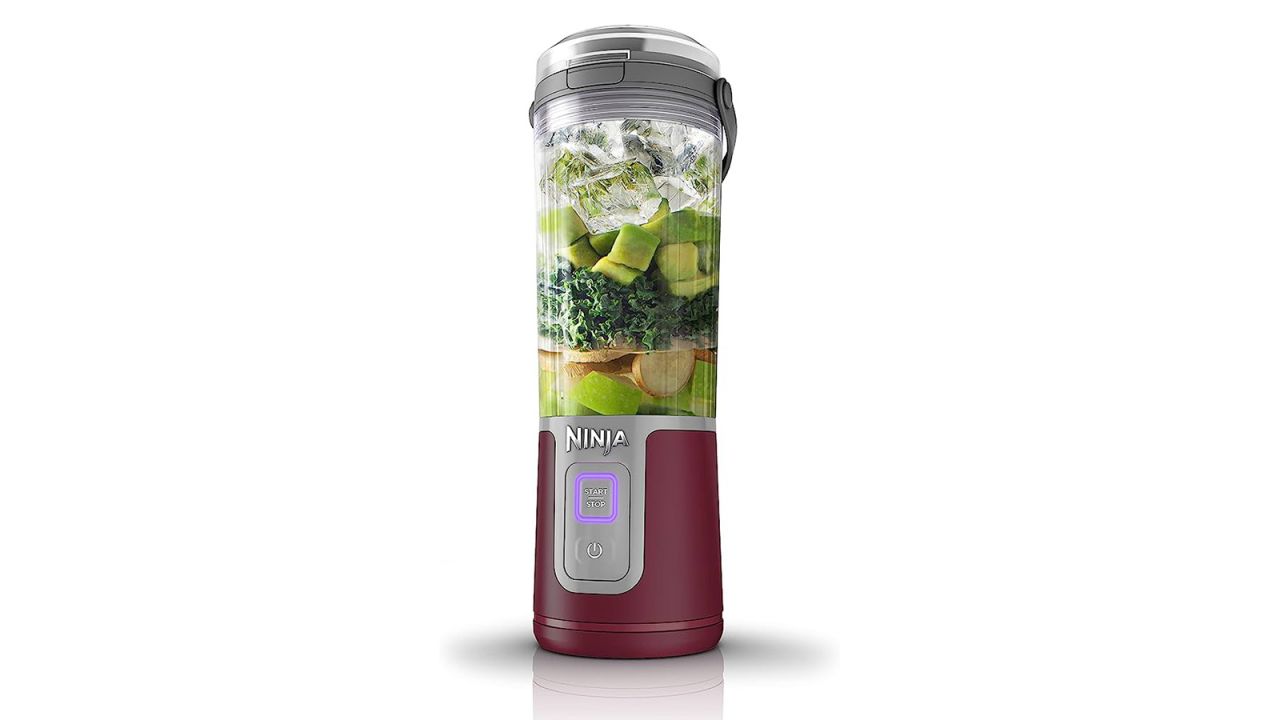This article is part of our series Battle of the Brands, in which we compare category-leading products to their counterparts to determine which are actually worth your money.
Single-serve coffee makers are a quick and easy way to get your daily dose of caffeine, without making a trip to the café or brewing an entire carafe at home. The market is flooded with machines designed to brew a single cup, though Nespresso and Keurig are two of the most popular brands. But how do they stack up against each other? I put both to the test to find out.
For some context, I’m a coffee lover who looks forward to my first sip of coffee as soon as I wake up every morning. I’ve been using the Nespresso Vertuo Next for the past four years. (But I occasionally like to switch things up, so I also have a fully automatic espresso machine, pour-over coffee maker and French press at home.) I used a Keurig religiously back in college, but I tested a newer version — the K-Supreme Plus —?for this review.
Nespresso Vertuo Next vs. Keurig K-Supreme Plus at a glance
The Nespresso stands out for its bold, flavorful coffee that never tastes watered down. It makes everything from single espresso shots to 18-ounce carafes of coffee, all in one compact machine. It has a built-in container to store used capsules, an adjustable drip tray to accommodate various mug sizes and an easy one-button operation.
Keurig's single-serve coffee maker has adjustable strength and temperature settings as well as cup sizes ranging from 4 to 12 ounces. There's even the ability to save your preferred settings for next time. Plus, the large water tank (with a built-in filter) means you won't have to refill it often. And with the wide variety of K-Cups available, you can experiment with tons of brands, flavors and roasts.
Quick comparison
|
Nespresso Vertuo Next
|
Keurig K-Supreme Plus
|
|
|---|---|---|
| Dimensions | 5.5 x 16.8 x 12.4 in. |
8.3 x 13.3 x 12.2 in. |
| Serving sizes | 1.35, 2.7, 5, 7.77, 12 and 18 oz. |
4, 6, 8, 10 and 12 oz. |
| Pod options | Nespresso and Starbucks only |
75+ brands |
| Used pod storage | Yes, 10 pods |
None |
| Water tank size | 37 oz. |
78 oz. |
| Auto shutoff | 2 min. |
5 min. |
| Additional features | Automatic capsule ejection, barcode system for brew settings and adjustable drip tray |
Adjustable strength and temperature, brew over ice setting, favorites and water filter |
Nespresso makes higher-quality coffee

The most important aspect to consider when comparing Nespresso and Keurig coffee makers is the quality of the brew. This was also where they had the biggest difference — and Nespresso was the clear winner.
The Keurig produces a weaker and more watered-down version of the coffee you’d get from a drip coffee maker. Since the machine I tested had adjustable strength options, I experimented with choosing a stronger setting and a smaller cup size to see if that made a difference. It definitely helped: The 4- and 6-ounce coffees brewed with level two and three strengths tasted much better than the 8-, 10- and 12-ounce coffees with the standard strength. Some of my experimental cups ended up tasting slightly burnt. Once I figured out the right settings, the Keurig coffee was drinkable but not something I’d crave (and I’m the type of person who thinks about coffee as soon as I wake up).
The Nespresso machine, on the other hand, consistently produces rich, flavorful coffee and espresso drinks. A 7.77-ounce coffee has just as much depth and flavor as a shot of espresso, which is no easy feat. It never tasted watered down either, even when I brewed the pods over ice for an iced coffee. Plus, Nespresso coffee and espresso all have a smooth layer of crema that drastically enhances the coffee-drinking experience.
The difference in coffee quality between the two machines is likely because of the brewing methods they use. The Nespresso Vertuo Next brews with high pressure thanks to the brand’s Centrifusion technology, which spins the capsules 7,000 times per minute to combine the coffee grounds and water. Newer Keurig models (like the one I tested) use what the brand calls MultiStream technology, which puts five holes in each pod so multiple hot water streams saturate the coffee. This is an improvement from the one-hole brewing process that older Keurigs use, but it’s still not at the same level as Nespresso.
Keurig has a wider variety of pods

Even though the quality of the Keurig coffee left a lot to be desired, the brand wins when it comes to variety. More than 75 authorized brands make K-Cups — including big names like Starbucks, Peet’s and La Colombe —?so the options are pretty much endless. I bought the Coffee Lovers’ Sampler Pack for testing purposes, which had a good variety of roasts and flavors. The pods from Caribou Coffee and Tully’s were my favorite.
Plenty of third-party companies sell Keurig-compatible pods too (like Atlas Coffee Club, a subscription that curates and freshly roasts coffee from all over the world). You can also buy a Keurig My K-Cup Reusable Filter and fill it with your favorite ground coffee. (Pro tip: Buy whole beans and grind them right before you brew for the best-tasting coffee.)
Unfortunately, Nespresso Vertuo pods are only available from the brand itself, significantly limiting your options. It has a partnership with Starbucks that offers Vertuo pods, but besides that, you won’t find third-party Vertuo pods anytime soon because Nespresso has a patent. That said, I’ve been extremely pleased by the variety of pods on Nespresso’s site. I usually stock up on 10-plus sleeves of various sizes and flavors so that I always have a pod I’m in the mood for at any given time —?whether that’s a bold double espresso for a latte or an easy-to-drink vanilla coffee.
I always keep the iced coffee pods on hand too; they’re flavorful and refreshing even when brewed over ice that inevitably melts a bit. Plus, the brand is always coming out with seasonal and limited-edition pods. I love the Tropical Coconut for summer and look forward to the Pumpkin Spice Cake every fall (I’d drink it year-round if that were an option).
Both machines are pretty easy to use
Single-serve coffee makers are generally all easy to use — that’s kind of the whole point. Nespresso and Keurig are no exception, though the two machines have slight differences that affect their usability. In terms of brew time, both coffee makers take nearly the same amount of time to heat up and brew coffee —?the Keurig was ever so slightly faster in my tests, but the difference was pretty negligible (around 30 seconds on average).
The Nespresso Vertuo Next is more foolproof because there are fewer buttons to press —?in fact, there’s only one button on the entire machine. And since every capsule has a barcode that the machine reads to choose the correct brew settings, it’s practically impossible to mess up your coffee. The Keurig K-Supreme Plus is more customizable, though. You can change the size, strength and temperature of every cup,?but I think this just made things more confusing since it took a lot of experimentation to make coffee I liked.

I appreciate that the Nespresso automatically ejects used capsules into a built-in bin that holds about 10 old pods. However, closing the machine’s head after inserting a capsule is a bit difficult (it’s definitely a two-hand task). There’s always some resistance, which might be even harder for someone with mobility issues. Closing the Keurig is pretty much effortless, even with one hand.
It’s also worth noting that the Keurig is significantly quieter than the Nespresso machine. The volume of the Nespresso machine in action never bothers me (it’s definitely not as loud as a blender, for example), but if you’re going to use it super early in the morning, I can’t promise you it won’t wake up sleeping family members.
In terms of cleaning and maintenance, both machines need to be descaled regularly. Nespresso and Keurig both have similar guidelines: descale every three months or so with the brand’s respective descaling solution. The Keurig’s screen will alert you when it’s time, while Nespresso’s button will flash with an orange light.
Nespresso is more expensive per cup —?but it’s worth the cost
Making coffee at home will always end up being cheaper than spending $5 (or more) at a coffee shop every day, even when you factor in the initial cost of the machine. The Nespresso machine I tested is currently on sale, making it nearly $100 cheaper than the Keurig I tested (although the K-Supreme Plus is a souped-up model compared to the rest of the lineup). Other Keurigs come at a more budget-friendly price —?like the Keurig K-Express Coffee Maker, which is $70 on sale, $90 full price.
When it comes to price per cup of coffee, K-Cups are significantly cheaper. You can get K-Cups for as little as 43 cents each on Keurig’s site, and the prices on Amazon are comparable. Nespresso Vertuo pods range from 98 cents each for 1.35-ounce espresso shots to $1.50 each for 7.77-ounce coffees. (Special or limited-edition pods can cost even more.) But since the coffee quality is so much better, I’m happy to pay this much per pod — and it’s still cheaper than coffee at a café.
Bottom line

Deciding on a winner was a no-brainer. Coffee quality is the most important aspect, and the Nespresso Vertuo Next produces the best-tasting coffee. Plus, the machine’s barcode-reading technology takes all the guesswork out of brewing the perfect cup — it automatically chooses the perfect time, temperature, cup size and more. The coffee is flavorful and smooth, especially compared to the Keurig’s weaker brew. The Nespresso Vertuo capsules cost more and don’t come in as many varieties as Keurig K-Cups, but it’s a trade-off worth taking for better-quality coffee.
However, there are still some people out there who would benefit from a Keurig. People who only drink coffee occasionally might opt for a Keurig since the pods are so inexpensive — the same goes for those looking for a coffee maker for a guest bedroom or vacation rental. You might also prefer a Keurig if you crave lots of variety, want to use your own coffee grounds or need to appeal to a wide variety of tastes and preferences (such as in an office or shared living space).




















